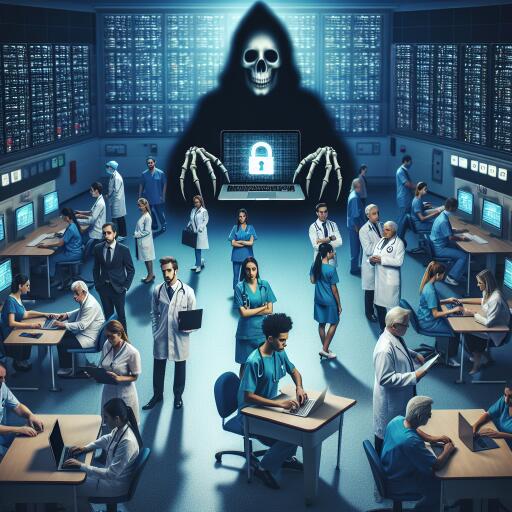Silent Menace: Ransomware Strikes Unseen in the Healthcare Sector
Imagine a scenario where urgent medical care must be provided by the light of candles, not due to a blackout, but because the very systems designed to preserve lives are under digital siege. This scenario, reminiscent of a scene from a dystopian narrative, is a harsh reality for hospitals throughout the United States, which have become prime targets for cybercriminals. The fusion of healthcare and technology has unwittingly unleashed a myriad of vulnerabilities, turning valuable patient information into a pirate’s treasure, with ransomware attacks serving as the modern-day curse.
In the aftermath of a November 2022 incident that left a healthcare chain’s operations in disarray—forcing doctors to divert patients and delay surgeries—the spotlight is intensely focused on the digital vulnerabilities of healthcare providers. Beyond the imperative of data security lies a more profound issue: the protection of humanity itself.
The digital evolution within healthcare, while monumental in advancing patient care, has inadvertently broadened the landscape for cybercriminal threats. Small to medium healthcare establishments, as well as third-party service providers, have emerged as preferred targets for cybercriminals seeking gateways into secure systems. The inherent complexity of healthcare networks, combined with the highly sensitive nature of patient data, renders them particularly susceptible to ransomware attacks. Such digital assaults threaten not only the confidentiality of patient information but also the continuity of essential healthcare services, risking lives in the process. This escalating threat is highlighted by a notable rise in cyberattacks against hospitals, from 25 reports in 2022 to 46 in the subsequent year, underlining the critical need for fortified cybersecurity measures, including the adoption of advanced Extended Detection and Response (XDR) technologies.
Confronted with a growing cybersecurity threat landscape, the US Government Accountability Office (GAO) has issued stern directives to the Department of Health and Human Services (HHS). The mandate emphasizes enhancing oversight of ransomware mitigation practices within the healthcare sector, recognized as a component of critical infrastructure. This initiative involves a collaborative effort with the Cybersecurity and Infrastructure Security Agency (CISA) to refine and assess current cybersecurity practices, with the aim of developing stringent evaluation procedures to mitigate ransomware risks. This proactive approach underscores the recognized severity of ransomware attacks and their crippling effects on healthcare operations. However, as cybersecurity defenses evolve, so do the strategies of cybercriminals, prompting an ongoing battle between security professionals and digital extortionists.
The cybersecurity landscape within healthcare is characterized by significant disparities, with rural hospitals finding themselves in an especially vulnerable position. The upcoming regulations from HHS, while well-intentioned, present considerable challenges for these smaller entities, which often lack the financial and technical resources to implement thorough cybersecurity defenses. Falling victim to a cyberattack can have devastating consequences, potentially incapacitating hospital networks for extended periods and necessitating the diversion of patients elsewhere. This scenario underscores the imperativeness of a collaborative and holistic approach that offers support to healthcare providers of all sizes, ensuring comprehensive preparedness against cyber threats. The repercussions of inaction extend beyond financial implications, touching the very core of human health and life.
Amidst the escalating threat of cyberattacks, the healthcare sector stands at a pivotal juncture. The way forward requires a united front among government bodies, cybersecurity experts, and healthcare professionals. Strengthening the sector’s defensive capabilities is not just a technical challenge but a moral obligation, with patient safety and confidentiality at stake. As we traverse this intricate landscape, the insights gained will not only be instrumental in shaping the future of healthcare cybersecurity but will also be a testament to our collective resilience in combating digital adversaries. The time for decisive action is now, to prevent being caught off guard by the thunderstorms looming on the digital horizon.









